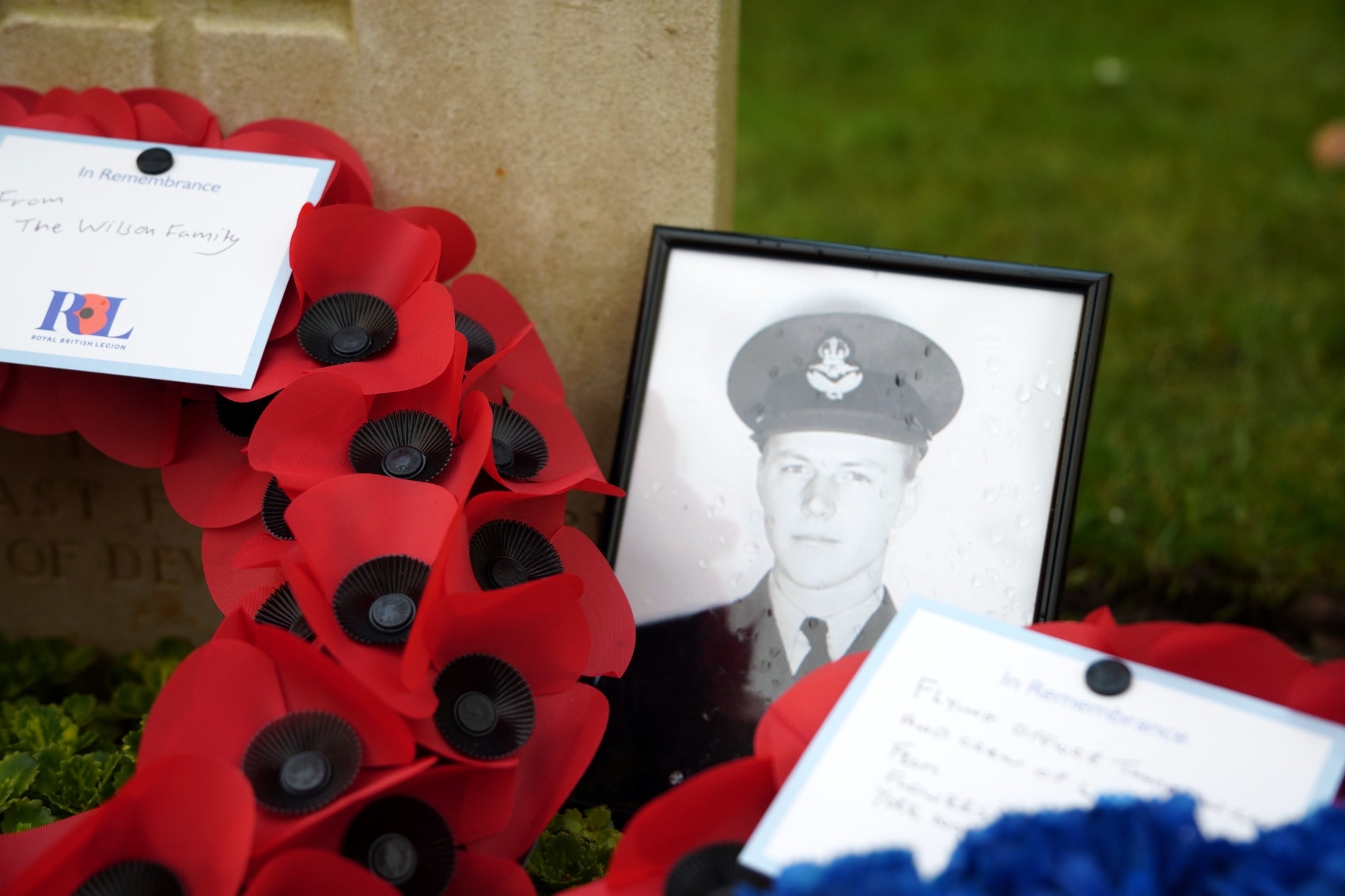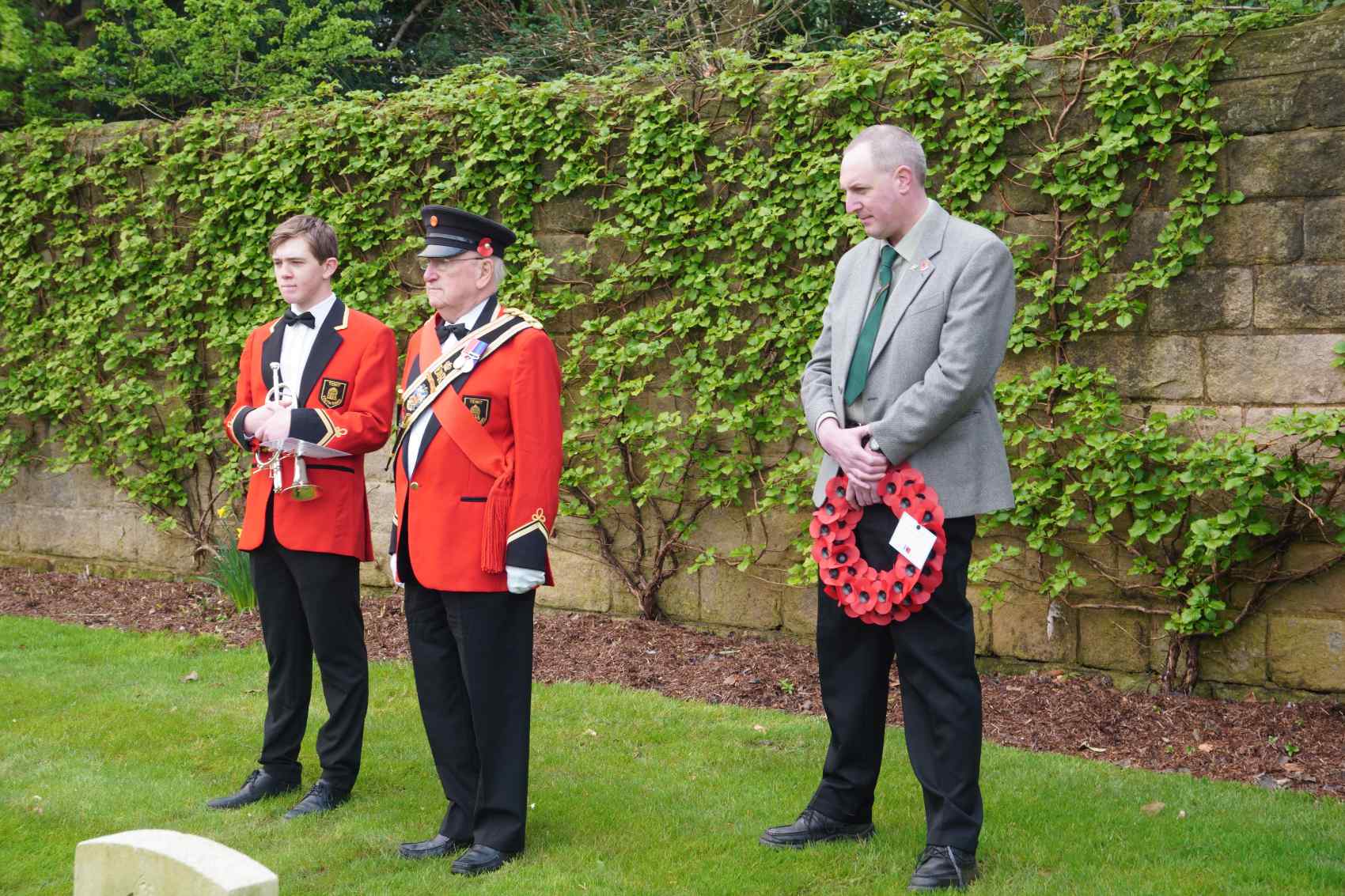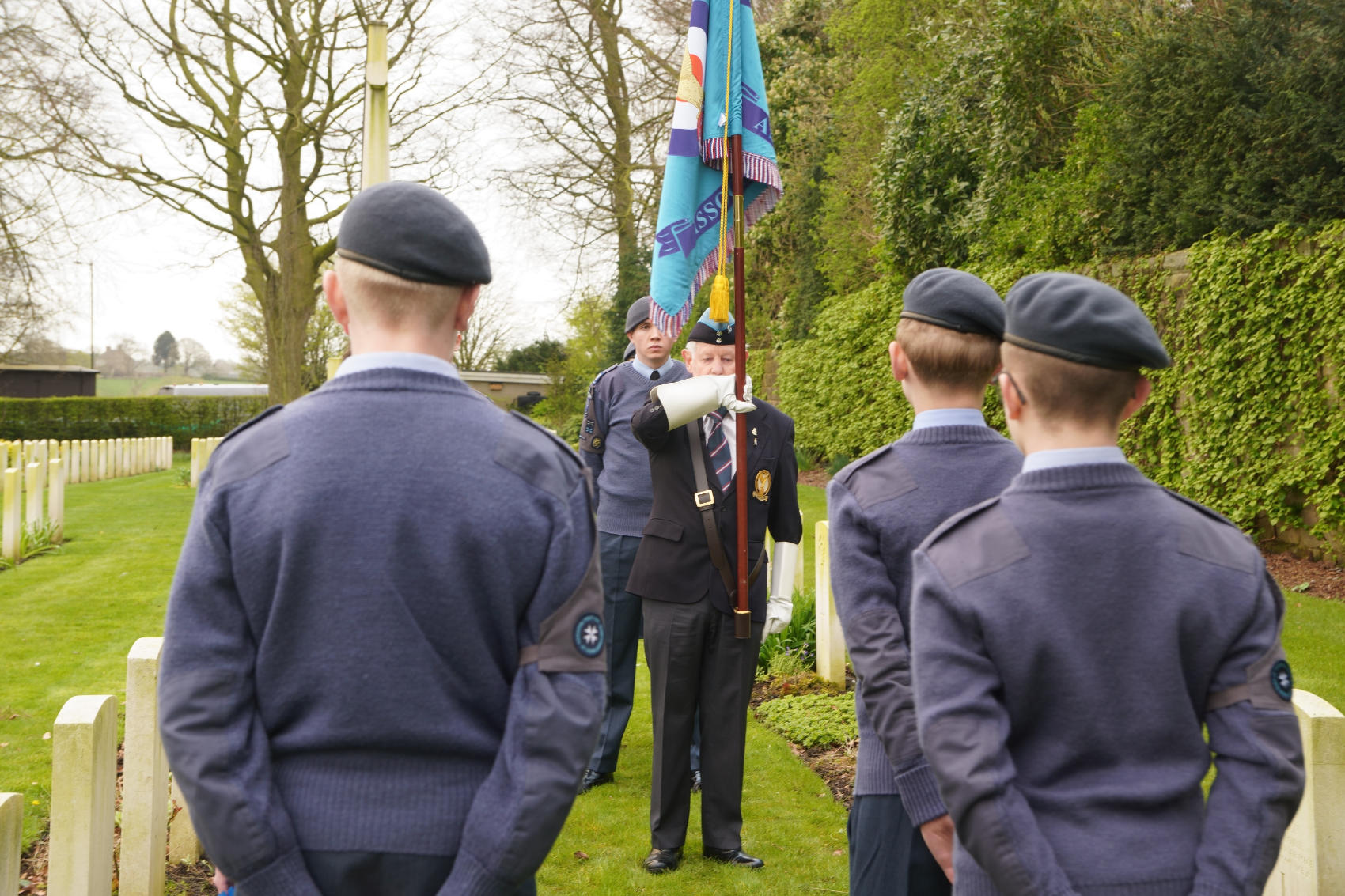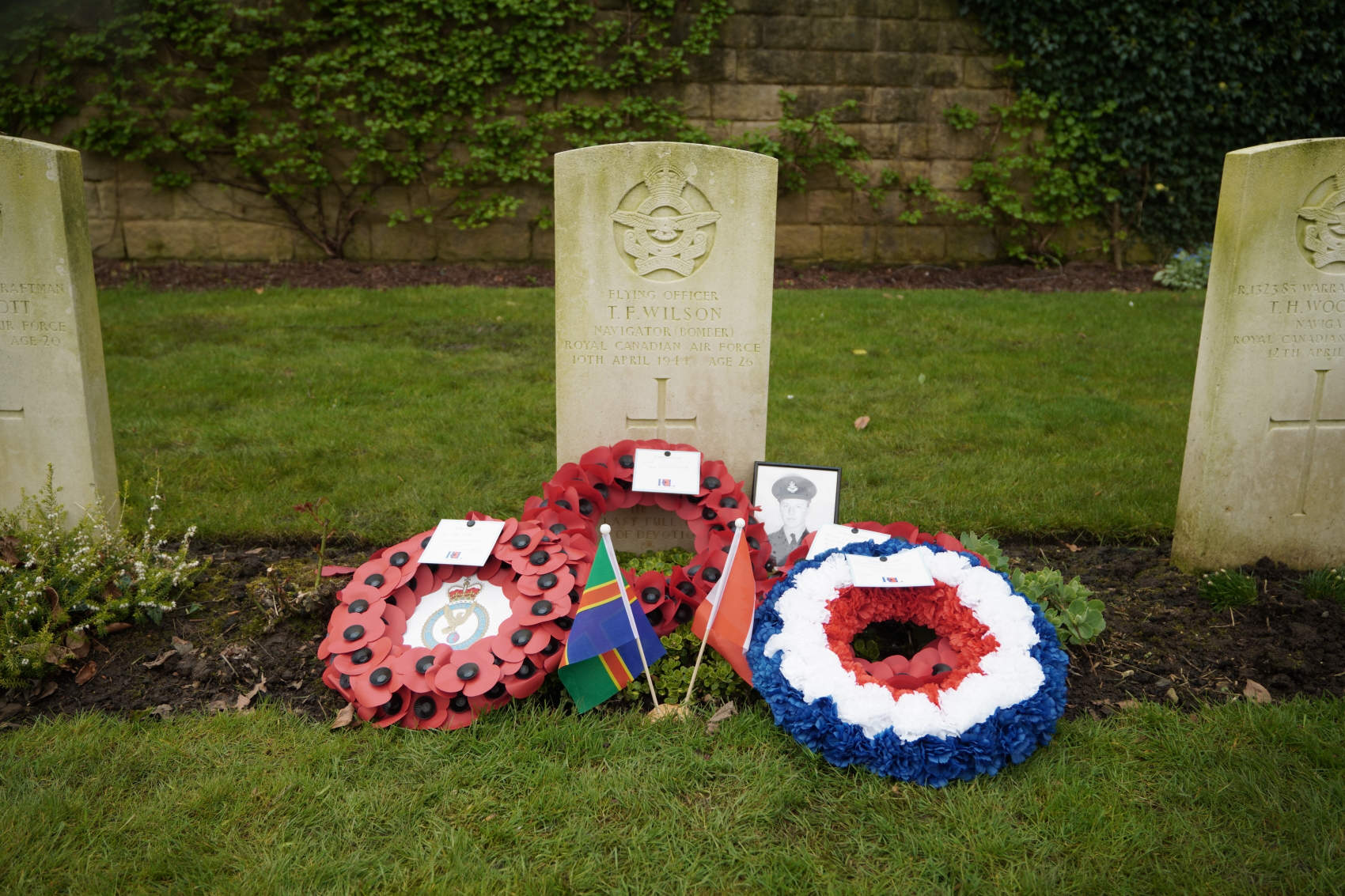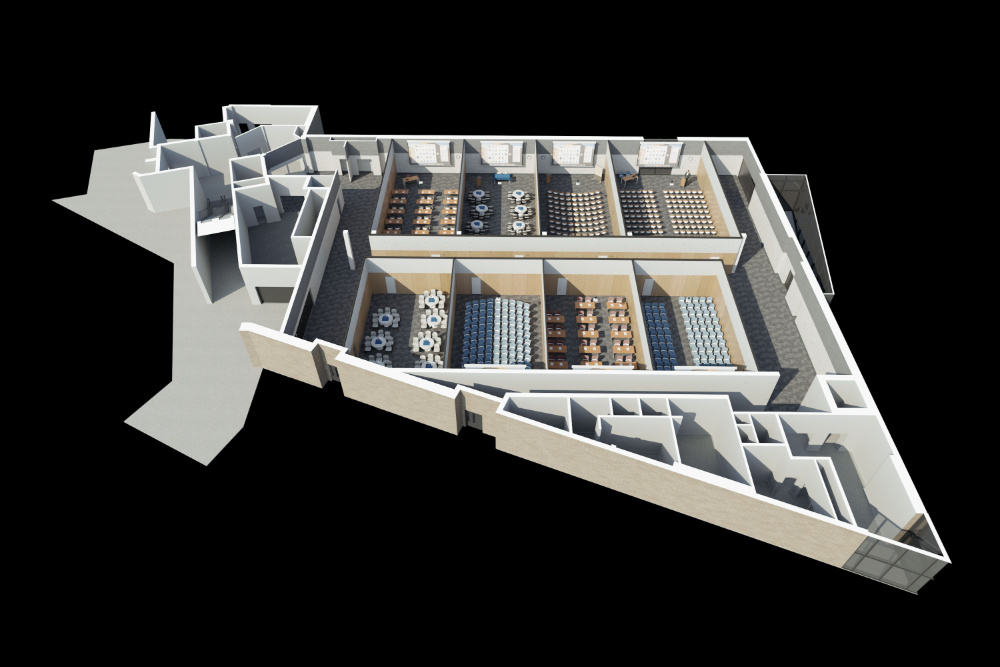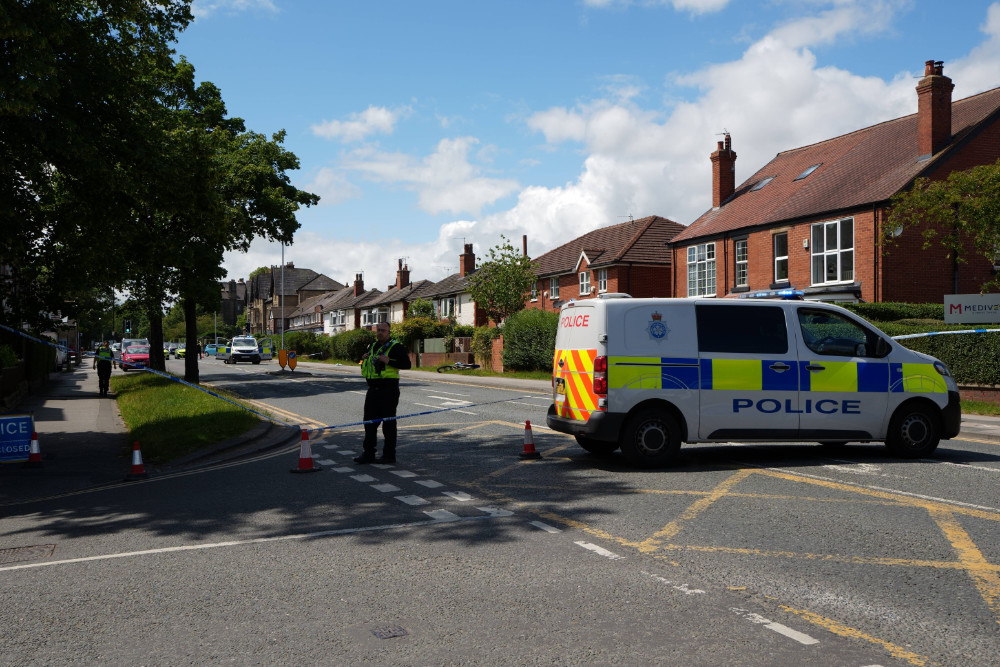The Commonwealth War Graves Commission (CWGC) today hosted a commemorative service for Flying Officer Thomas Ferguson Wilson at a cemetery in Harrogate on the 80th anniversary of his death.
Flying Officer Wilson served with the Royal Canadian Air Force (RCAF) during the Second World War. On the 10 April 1944, during a training flight on a Lancaster bomber, the aircraft crashed near the village of Bicker, Lincolnshire and all seven of those on board were killed.
The service in Harrogate was exactly 80-years, to the minute, of the crash, and there was also a service in Bicker at the same time.
Wilson’s body was the only one to be found and he was buried at Stonefall Cemetery, Harrogate – the remaining crew are all commemorated by the CWGC on the Runnymede Memorial.
The service was organised by Tim Webster, whose parents have long maintained the memorial in the village of Bicker close to the crash site.
In attendance were members of the Royal Air Force Association and the York based group, Flowers for the Fallen.
Tim said:
For around 15 years my parents have looked after the memorial at the crash site at Bicker where an annual service has been held to remember the men who lost their lives in the incident on the 10th April 1944.
This year, on the 80th anniversary, I thought it fitting to travel to Stonefall Cemetery to lay a wreath on Wilson’s grave at the exact time that he lost his life.
I have been in contact with his family in Canada and they send their blessings and thanks for what we are doing to remember their relative.
The Crash
Lancaster ND 820 lifted from the runway at 10:58 am on 10 April 1944.
The weather during the navigational exercise flight was freezing above 5,000′ with visibility being 15 miles with no clouds and the winds were 60 mph. The aircraft was at 8,000′ on the first leg of the exercise when it suddenly dived and the pilot was not able to recover and the aircraft crashed at a high rate of speed at 11:20 am. At about 400′ both ailerons tore away from the aircraft. Lancaster ND 820 crashed four miles southwest of Swinehead at the village of Bicker in Lincolnshire. The crew had been in the air a total of 22 minutes and it is not known if the cause of the crash was weather related or mechanical. There is a tree across the road from the point of impact that has grown at about a 45 degree angle and this odd angle was caused by the blast of the aircraft striking the ground. This tree took a lot of the blast and it saved the life of a farm worker who was in the field behind the tree. To this day there is still a dip in the road caused by the force of the crash.
Flying Officer Wilson died from multiple fatal injuries. He was the only crew member that was able to leave the aircraft and he was found hanging from the tree in his parachute. He was the only member of the crew who was recovered from the crash site. Squadron records indicate that this crew was one of the happiest and close knit in the Squadron. On April 10, 2004, 60 years after this aircraft crashed, a memorial where the aircraft crashed was unveiled to the crew of Lancaster ND 820 with over 50+ townsfolk attending the ceremony. The memorial was unveiled at exactly 11:20 am. Even today all these years later a great deal of wreckage still lies under the ground and road where the crash took place. In addition, the 6 crew members not recovered are still on the ground where the crash took place. From the crash record card it states that Lancaster ND 820 was on a bombing run and bombing practice exercise while at 8,000′ and witnesses on the ground noted it was performing a diving turn to port which increased in rate before going into a vertical dive. These witnesses saw the ailerons break away prior to impact. Some say the aircraft had caught fire prior to the crash.
His wife Laurene and his mother Euphemia received the Memorial Cross in the month of June 1945. Then in March of 1947 his wife Laurene received the medals awarded to her husband which included the 1939-45 Star, the Air Crew Europe Star, the Defence and War Medals plus the Canadian Volunteer Service Medal with clasp.
About Thomas Ferguson Wilson
On July 22, 1917, Thomas Ferguson Wilson was born in the small village of Whitechurch, Ontario, Canada. A small farming village about 200km west of Toronto, very close to Lake Huron
His parents James and Euphemia Wilson, had four children; Merle, James, Agnes and their youngest was Tom. The family ran a small lumber and planing mill, as well as the family farm. The farm grew hay for their livestock, fruit trees and gardens to provide for the family.
Tom grew up with an interest in intellectual hobbies like photography, the radio and map making, but he also liked to play softball and football, and helped around the homestead and sawmill. Tom was of average height, had bright blue eyes and was very funny and brilliant (according to his sister!).
He was very close to his siblings, especially the sister closest in age, Agnes.
Tom was identified as an extremely intelligent, responsible and fun loving boy from an early age.
The village of Whitechurch did not have a highschool so the academically gifted Wilson kids were sent to board with a cousin in a nearby town.
He received his elementary school education, then attended high school graduating in 1934 then headed off to teacher’s college a few hours away.
In 1936 he graduated from the Stratford Normal School (teacher’s college) , one of the few options for post secondary education for Canadians with limited access to funds. Stratford was far away from home and Tom would take the train back to Whitechurch whenever he could.
From 1938 until enlistment he took a Wireless Telegraphy Course from the Radio College of Canada.
At the age of 19 (1936-38) he was a public school teacher and then at the young age of 22 (1939) he became the Principal (headmaster) at West Wawanosh public school.
In January of 1941 Thomas voluntarily enlisted in the RCAF, with a recommendation from his Presbyterian Minister describing Tom as a ‘high principal boy and his conduct leaving no thing to be desired’.
In 1942 Tom met and married Laurene. Laurene stayed with the Wilson family after he departed for England.
Though Tom never got to meet him; he and Laurene had a son named Terrance (Terry).
Laurene eventually remarried and raised Terrance near the village of Whitechurch, where just like his father, Terrance became a teacher.
Terry and his wife Jane, are now retired and enjoying life as grandparents.
All three of Tom’s siblings lived long lives and remained very tight knit, living well into their 90’s. His older brother James worked the sawmill and farm until his retirement, and raised five children. His sisters both continued their post secondary education, becoming nurses. His sister Agnes worked as a nurse in veterans’ care and lived to be almost 99 years old.
Terry remembers that for decades Laurene stayed in touch with a volunteer from Harrogate, who gave her own time to care for the site where Tom’s body was laid to rest. Laurene always told Terry how much she appreciated the thoughtfulness. Though most details of the accident remained unknown to Terry and the rest of our family until recently, we are deeply grateful for the people of Harrogate and those in Bicker Bar Lincolnshire. So many of you have stood in for us. Honouring not only Tom, Laurene and Terry but Mr and Mrs Wilson who lost their son, for his brother James and his wife Catherine, for his sisters Merle and Agnes and Agnes’ husband Albert. Also Tom’s late nephew and 6 nieces and many great nieces and nephews and even more great great nieces and nephews.
On behalf of Tom’s family, we are so grateful for the care and love that the residents of Harrogate have bestowed upon us, honouring Tom and his crew, and keeping this loving and bright man in your hearts.
Canada
On April 26, 1941 he enlisted into the Royal Canadian Air Force in London with the rank of Aircraftsman 2. At the time he was 5′ 10″ and weighed 147 pounds. He had a fair complexion with blue eyes and light brown hair. He remained at the London Recruitment Centre for two months. His first posting was to No. 4 Auxiliary Manning Depot based at St Hubert – Quebec. Between August 9-October 6 he was posted to No. 3 Training Centre Headquarters in Montreal – Quebec. Then it was to New Brunswick to No. 9 Air Observer School in St John between October 7-October 27. Then he was posted to Victoriaville – Quebec from October 28-December 20 to No. 3 Initial Training School. While posted here he obtained the rank of Leading Aircraftsman. As 1941 was ending he was posted to No. 8 Air Observer School based at L’Ancienne -Lorette – Quebec on December 21. While he is here he obtained the rank of Sergeant.
Sergeant Wilson on March 29, 1942 is then posted to No. 9 Bombing and Gunnery School based at Mont Joli – Quebec and where he receives his Air Observer Bade and remains here until May 24 and at this time he is posted to the flatland of Manitoba to No. 1 Air Navigation School based at Rivers which then becomes No. 1 Central Navigation School and it is here he obtains the rank of Pilot Officer. Then beginning on July 29 and for the next 10 months he was posted to No. 7 Air Observer School at Portage la Prairie – Manitoba. While he is here he obtained the rank of Flying Officer.
On the last day of May 31, 1943 he was then sent east to Halifax to No. 1 “Y” Depot. Then on June 11 he volunteered for the RAF Training Pool.
Overseas
Flying Officer Wilson then embarks Canada for overseas duty on June 23 and disembarks in the United Kingdom on July 1. The next day in Bournemouth – Dorset he reported to No. 3 Personnel Reception Centre. Between September 10-27 he was a RAF Group 8 Headquarters at Castlehill House – Huntington – Cambridgeshire. On September 28 his next posting took him to RAF No. 9 Observer Advanced Flying Unit based at RAF Base Penrohs – Gwyned – Wales. On November 17 the next posting took him to the Permanent Force Navigation Training Unit and then at the very end of the year he was posted to RAF No. 97 Squadron “C” Flight.
In the Field
On March 20, 1944 he was then posted to RAF No. 635 Squadron which was formed on this day from “B” F;ight of RAF No. 35 Squadron and from “C” Flight of RAF 97 Squadron. They flew from RAF Base Downham Market in Norfolk. When Lancaster Mk III ND 820 was delivered to the Squadron the Commanding Officer flew the aircraft and while he was at 8,000′ he turned the autopilot on and it immediately went into a dive and was able to recover from.

